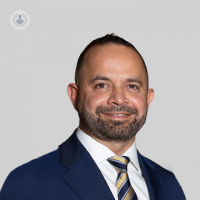Botox for pain relief: How does it work?
Written in association with:Although Botox is commonly known for its use in anti-ageing treatments, there are many beneficial applications of this form of treatment. In this informative article, highly respected advanced cosmetic doctor and consultant specialist in pain medicine Dr Husham Al-Shather explains how Botox is used as a highly effective, minimally invasive treatment for some types of chronic pain.

What is Botox?
Botox, or Botulinum toxin, is a substance injected deep into the skin or muscle. It's commonly used as a minimally invasive treatment for persistent pain.
How does Botulinum toxin work?
Botulinum toxin temporarily paralyses and relaxes injected muscles, alleviating pain by preventing muscle contractions. It achieves this by blocking acetylcholine, the neurotransmitter responsible for muscle contraction, and by inhibiting pain signals to the nervous system, thus preventing conditions like migraine.
What are the advantages of Botulinum toxin in pain management?
Botulinum toxin offers effective pain relief with minimal side effects. Unlike oral muscle relaxants, it doesn't cause sedation. Its effects can be long-lasting, and adverse reactions are typically mild.
What are the indications of Botulinum toxin in chronic pain?
Botulinum toxin is used to treat various chronic pain conditions, including cervical dystonia, chronic headaches, thoracic and low back pain, muscle spasms, peripheral neuropathic pain, myofascial pain syndrome, fibromyalgia, and spasticity-related pain.
What are the side effects?
Side effects of Botulinum toxin injections are usually mild and temporary. Common ones include bruising, flu-like symptoms, abdominal pain, sickness, and headaches. Rare side effects may include allergic reactions, difficulty breathing, muscle weakness, and resistance to Botox effects.
What are the contraindications for treatment?
Botulinum toxin treatment is contraindicated for individuals with neuromuscular disorders like myasthenia gravis, those taking certain muscle relaxants or antibiotics, pregnant or breastfeeding women, and those with infections, inflammation, or bleeding disorders at the injection site.
To schedule a consultation with Dr Al-Shather, visit his Top Doctors profile today.


